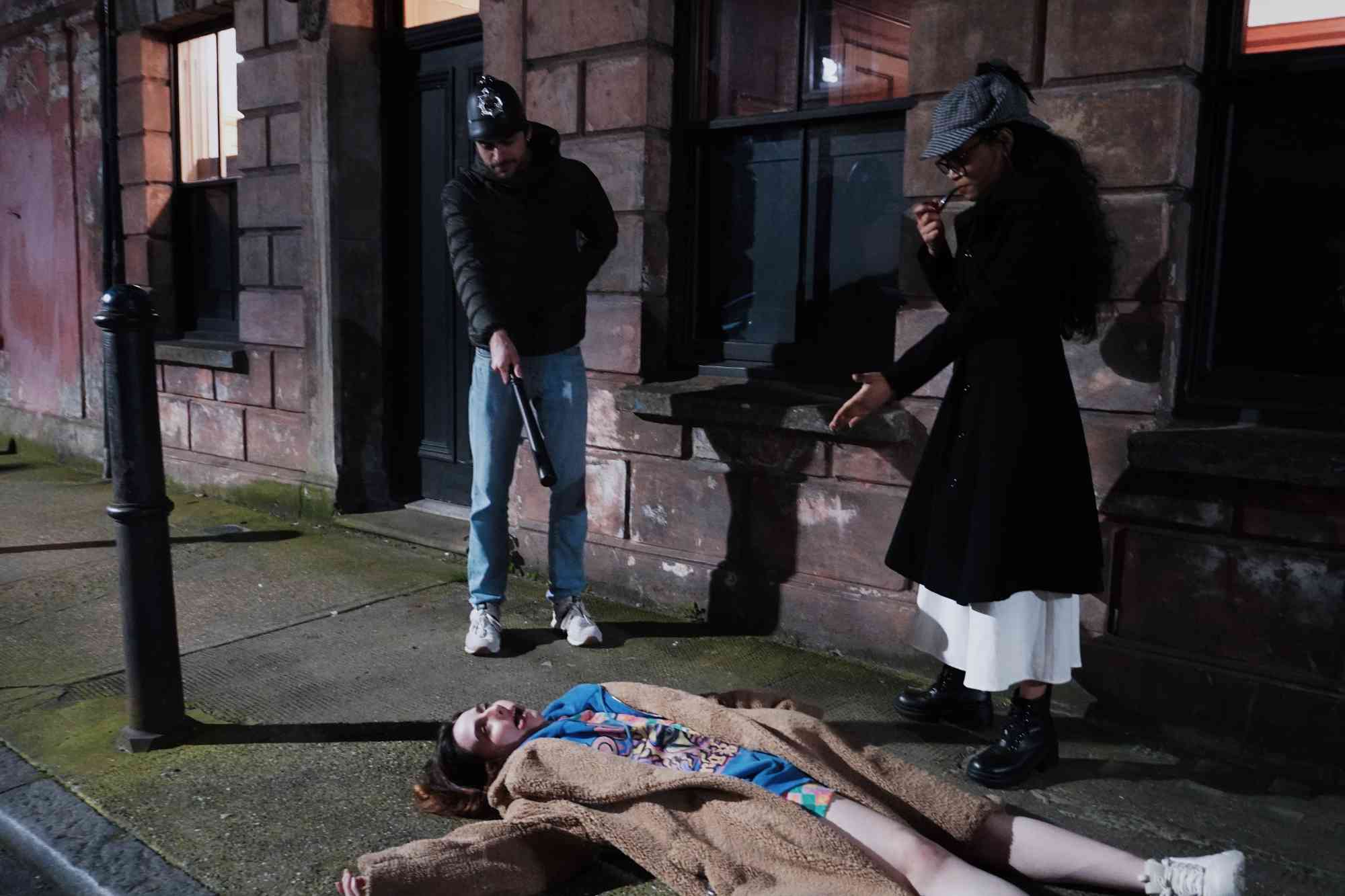
GUIDED TOURFrom €25.00
The London Jack the Ripper Tour
London, the historic capital of Britain, has witnessed a great deal of turmoil over the centuries. From devastating fires and civil wars to plagues and public executions, the city has survived innumerable trials and tribulations. Remarkably, London has emerged stronger, establishing itself as a leading center of culture and commerce.
While today’s landscape may not reveal it, London’s foundations are steeped in violence. As far back as 60 CE, the city experienced bloodshed when Queen Boudicca attacked, resulting in the deaths of thousands. This history is deeply rooted in the city’s narrative.
With over 2,000 years of inhabited history, every corner of London holds stories of its past, from museums and churches to the streets of Whitechapel, where one can literally follow in the footsteps of the infamous Jack the Ripper. Below are some of the most intriguing and dark facts about London.
London is riddled with concealed plague pits
Like many cities in Europe, London has suffered through numerous plague outbreaks. The first major one, known as the Black Death, arrived in 1348 and resulted in approximately 40,000 deaths before subsiding in 1350. After a 300-year gap, the city faced another outbreak, along with around 40 smaller outbreaks in the meantime.
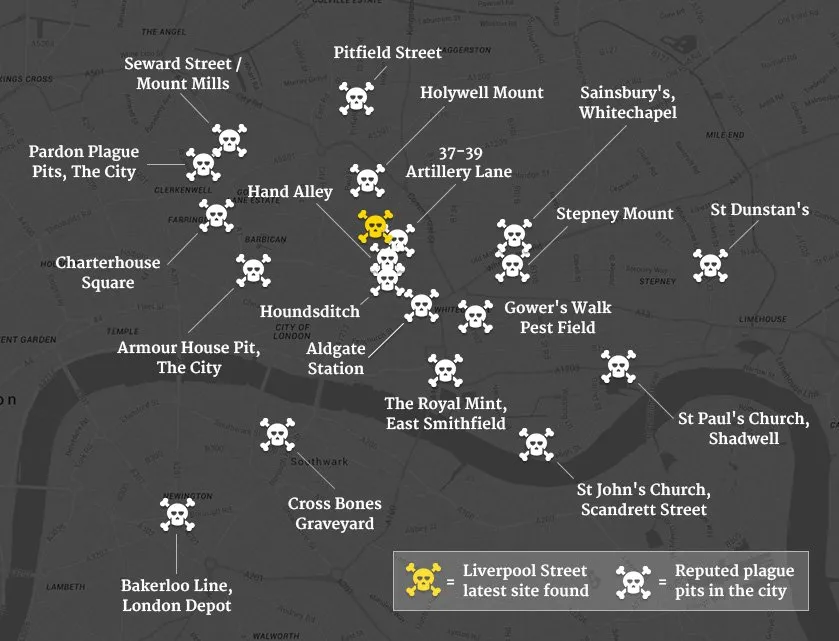
The Great Plague of 1665-66 was particularly deadly, claiming over 100,000 lives, about 15% of the city’s population. With bodies piling up in the streets, those who survived faced a grim dilemma of how to dispose of the dead. Churchyards quickly filled, leading to the creation of mass plague pits, a necessity due to the horrific conditions.
Many of these plague pits have been uncovered during construction projects in the city. For instance, in 2013, an immense pit was found beneath Charterhouse Square, believed to hold the remains of up to 50,000 victims from the Black Death. Another pit was unearthed in 2017 at the site of the Bedlam cemetery, where DNA testing confirmed the presence of the plague-causing bacteria for the first time.
Mass graves didn’t deter the London Underground
As you traverse London, every step may bring you above a grave. The city is often described as one gigantic burial ground. For those commuting via the London Underground, be aware that thousands of human remains might lie beneath as you travel.
A persistent myth suggests that the design of the Underground was influenced by the graves below, particularly between Knightsbridge and South Kensington, where it was said the line curved to avoid a massive plague pit beneath Hyde Park. However, this was not the case; when the Underground was designed, planners preferred to follow established roads to maintain building foundations.
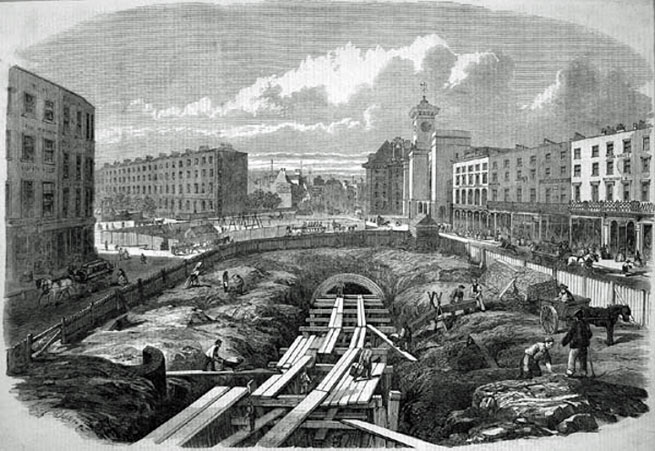
Throughout the construction of the Underground, workmen encountered human remains. Alan Jackson documented such finds while digging between Paddington and King’s Cross in 1862, from which he called the London Necropolis Company to handle the remains appropriately.
St. Sepulchre was a grim place to reside
If you weren’t keen on grave robbing or attending public executions, living near St. Sepulchre would have been quite dire. The area surrounded the Church of the Holy Sepulchre, still the largest parish church in central London, as well as the Tyburn gallows, where public executions drew massive crowds every six weeks.
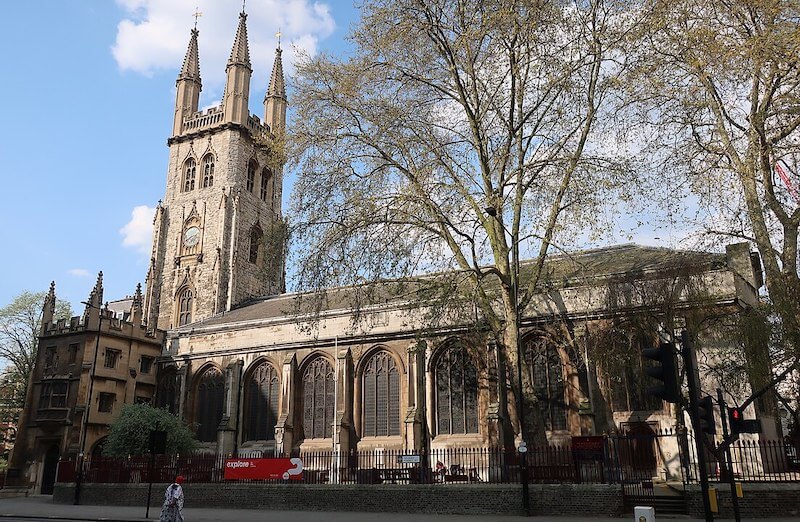
The Church was established in the 12th century but suffered damage in the Great Fire of 1666. After reconstruction, its overpopulated graveyard became a target for grave robbers looking to sell bodies for medical education. The government responded by building a Watch House to reduce theft.
The church retains its original Execution Bell, used to signal upcoming public executions, providing a haunting soundscape as condemned prisoners made their final walk from Newgate Prison to the gallows.
Wapping, along the Thames, had an even darker side
The River Thames, a vital part of London, was also the site of grim endings at Executions Dock in Wapping. Here, condemned prisoners met their fate on a scaffold extended over the river, turning executions into public spectacles. Victims, often pirates, were hanged with ropes designed to extend their deaths as a warning to others.
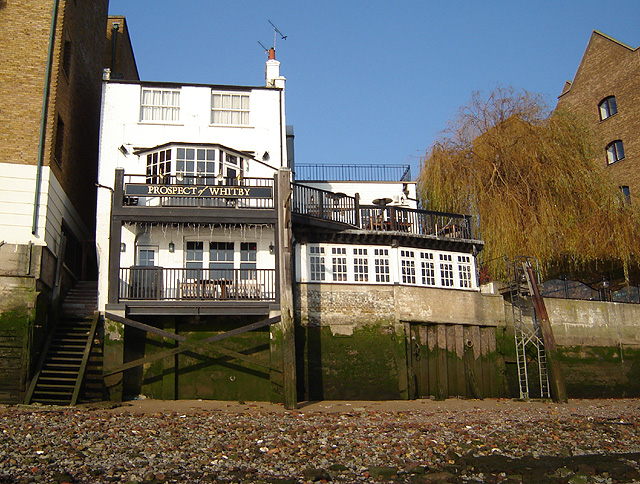
One notorious pirate executed here was Captain William Kidd. Found guilty of piracy and murder, he was brought to Executions Dock in 1701 where a large crowd gathered. His execution became infamous when the rope broke on the first attempt, but it was ultimately successful on the second and his body was displayed as a warning.
As onlookers filled the nearby Prospect of Whitby pub, they watched grisly scenes unfold over their drinks, a disturbing intersection of enjoyment and horror. Today, the pub remains, replete with historical echoes, and visitors can see replicas of the gallows.
Standing by the river now, it’s easy to imagine the cries of the condemned echoing in the wind, letting us reflect on how justice once meted out its harshest penalties along the Thames.
For almost a century, London had a train service solely for the dead
In ancient Greek culture, coins were placed on the eyes of the deceased to pay Charon, the ferryman of the dead. In 19th century London, deceased individuals received a train ticket to travel from Waterloo’s Necropolis Station to Brookwood Cemetery, 23 miles away.
This peculiar form of transportation arose from a pressing need for burial space, as the city, covering just 218 acres, faced approximately 50,000 deaths annually. The circumstances grew dire, prompting Parliament to prohibit new burials in central London and establish designated necropolises outside city limits.
Brookwood Cemetery, opened in 1854, had a station added in 1864 to facilitate transport for friends and families. Tickets were available for varying classes, reflecting the British class system’s peculiarities, although many found the practice inappropriate.
The service lasted until the rise of automobiles made transport redundant. The Necropolis Station met its end during the Blitz in 1941 as a German bomb struck. For 87 years, this unique service received not a single passenger complaint.
Executions continued at the Tower of London until recently
The Tower of London, constructed between the 11th and 13th centuries, gained notoriety as a prison for many famous figures, including Anne Boleyn and Sir Walter Raleigh. Over the centuries, it became synonymous with executions.
Although executions waned in frequency, the last one occurred much later than one might expect. In February 1941, Joseph Jakobs, a German spy captured shortly after parachuting into England, was executed at the Tower. Found with forged identity papers and a pistol, he was tried and sentenced without delay.
Jakobs was executed by firing squad in a rifle range within the Tower, marking a grim continuation of its dark legacy.
Whitechapel still echoes its sinister history
The vibrant streets of modern-day Whitechapel starkly contrast its grim past. Once filled with poverty and despair, it was here that Jack the Ripper’s ghastly murders unfolded—tragedies that continue to haunt London’s collective memory.
The gruesome acts carried out by the Ripper were not mere crime; they were horrific beatitudes, each one etched into history. His identity remains a mystery debated by many, from local butchers to aristocratic figures.
Media sensationalism transformed the Ripper into a spectral figure, a harbinger of fear during a period of great societal unrest. The very streets that welcomed the Ripper now draw countless tourists eager to learn of this infamous chapter in history.
Today, Whitechapel has evolved, but it still carries remnants of its shadowy past, inviting visitors to explore its haunted alleys and revisit the chilling stories of yore.
“Duck Baiting” was a macabre pastime in 18th-century London
London’s pubs have a notorious history, steeped in blood sports that once entertained the masses. One such brutal sport was duck baiting, where a duck, immobilized by being restrained, was pursued by a dog in shallow water, with spectators betting on the outcome.
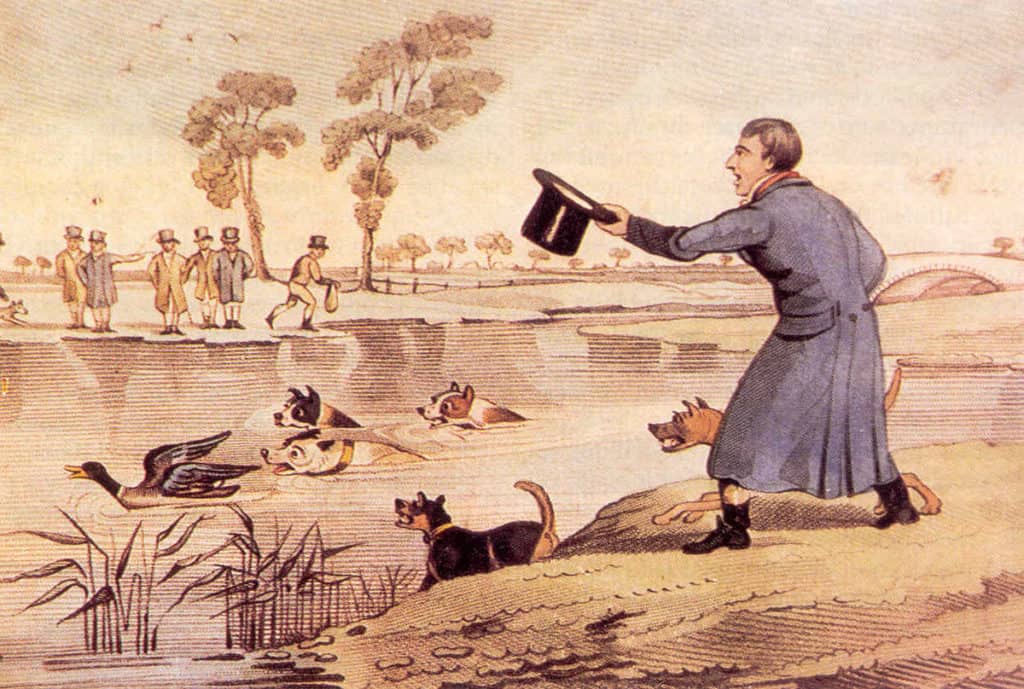
Duck baiting also encouraged audience participation, with some spectators hurling stones to hinder the duck’s escape. This peculiar sport had notable fans, including the likes of King Charles II.
Another popular, albeit grim, pastime was rat baiting, attracting spectators eager to witness terriers or bulldogs slaughter rodents. A particularly famous terrier named Billy once killed a staggering 100 rats in about five and a half minutes, setting a record that lasted mysteriously short in the face of fierce competition.
London was far from pleasant in the summer of 1858
While British summers aren’t typically sweltering, the summer of 1858 was excruciating for Londoners. Heat and pollution coalesced, creating a stench from human waste accumulating along the banks of the River Thames.
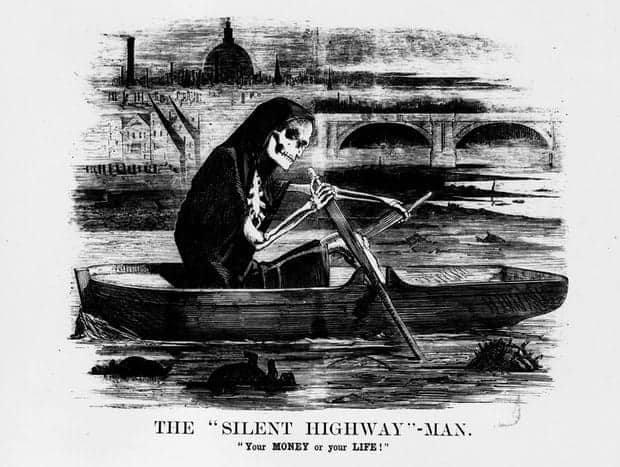
The stench was so overpowering that it prompted parliamentarians to abandon their sessions in Westminster, forced out by the pervasive odor. This prompted the appointment of Sir Joseph Bazalgette to redesign the city’s sewage system, addressing the public health crisis caused by the increasingly unsanitary conditions.
Faced with a booming population that had more than doubled, Bazalgette created a remarkable 82-mile network of sewers, treatment works, and pumping stations, ensuring improved sanitary conditions for London which still serve the city’s 8.8 million residents today.
Farringdon Station is said to be haunted
Life in 18th-century workhouses was brutally harsh for children, often orphans forced into what amounted to slave labor. One such child was Anne Naylor, who endured horrific treatment at the hands of her employers, the Metyards.
After enduring severe abuse and attempts to escape, Anne met a tragic end. Her murder was covered up by the Metyards, but her sister’s suspicion ultimately led to their arrest and execution. To this day, it’s said that Anne’s ghost lingers near Farringdon station, with her cries haunting the area where her life was cut short.
Explore London with Carpe Diem Tours!
Planning a visit to the UK? Our London Tours offer the most authentic experiences to explore the city. Trusted by many on TripAdvisor, our licensed guides are passionate about bringing London to life.
Craving some local flavors? Join our Borough Market Food Tour!
Want to socialize with fellow travelers? Check out our London Tipsy Tour!
See yourself as a detective? Join us in seeking justice for Jack on our Jack the Ripper Tour!
Bringing kids along? Make their trip special with our Harry Potter Walking Tour!

Alexander Meddings is a professional copywriter and a postgraduate in Roman history from the University of Oxford. After earning his MPhil, he moved to Florence and then Rome to conduct research on-site and pursue his passion. Alexander currently works in the travel industry as a writer and content consultant and also serves as a university lecturer and translator.





